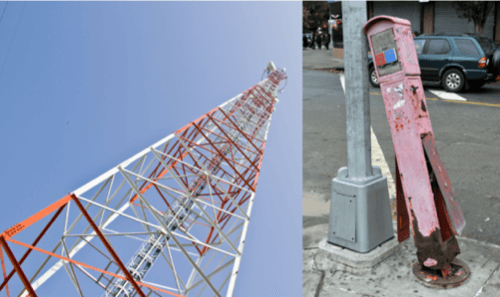
There is nothing like a disaster to bring people together. In a rare show of decency, AT&T and T-Mobile have teamed up to provide their networks to people affected by Superstorm Sandy this last week. How long will the partnership last and what does it mean for the future of cellular collaboration – during natural disasters and otherwise?
AT&T and T-Mobile will combine networks to offer non-roaming calls and data on whichever network happens to be available in a given area of the Sandy-ravaged East Coast. Consumers will not notice the difference as the service will be managed by AT&T and T-Mobile on the back end. All consumers of T-Mobile and AT&T need to do is dial out, and the carriers will take care of the rest.
AT&T and T-Mobile can achieve this temporary integration because the carriers share a common standard for their 2G/3G cellular services. Both are built on the ubiquitous GSM/UMTS standard and their networks are very similar from a tower and spectrum standpoint. Those similarities are one of the reasons that AT&T bid $39 billion to take over T-Mobile in 2011 before the Department of Justice and Federal Communication Commission expressed reservations and AT&T withdrew its offer.
Something Needed To Be Done
According to the FCC, a quarter of cell towers in 10 Mid-Atlantic to North Eastern states from Virginia to Massachusetts were knocked out due to Sandy. Some were damaged by wind, while others, such as several from Verizon in New York City, were affected by flood waters. For its part, Verizon has deployed four Wireless Emergency Communication Centers in New York (on Staten Island) and New Jersey. Verizon also has several mobile “stores on wheels” in the area. The company is offering device charging and free domestic phone calls to local residents. Verizon said that as of this afternoon that 96% of its service sites in the area of Sandy are operational.
The collaboration between AT&T and T-Mobile could present a blueprint for how mobile carriers handle future natural disasters. Verizon and Sprint also share a common cellular standard and could team up when needed to strengthen network coverage during emergencies.
A Painful Case Study
Hurricane Sandy provides an interesting case study in how the cellular infrastructure of the U.S. can withstand disaster situations. The good news is that most of the carriers’ towers and infrastructure survived – providing a semblance of coverage for most people. In addition, the carriers have mobilized quickly to repair service outages. The collaboration between T-Mobile and AT&T shows that, for at least a couple of days, the carriers can put aside their differences for the common good.
The bad news is that the parts of the carrier’s networks that did not go down, quickly became congested with voice and data transmissions. So even many people with serve got “circuits busy” messages or loss of data connections during and after the storm.
It is hard to imagine a storm much worse than Sandy, stretching out over such as wide and populated area. If there was truly a storm to test the carrier’s capability to provide service during times of distress, Sandy was it.
Images courtesy of Anton Oparin / Shutterstock.com.









